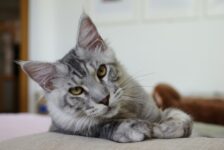
10 large cat breeds: All the basics about big house cats
The bigger, the better — maybe that’s your mantra. If you’re considering a big house cat — large breeds like Maine Coons or Persians, for instance — it’s just a good idea to do your homework before bringing one home.
There are physical attributes (hello, shedding fur!), personality traits (ever met a feline that is fond of fetch?), and good old-fashioned quirks (warning: do not even consider picking me up!) that come along with any cat, so it’s wise to take a look at your lifestyle, do your research and see how a feline might fit in.
To help you in your search for something, shall we say, more sturdy, we compiled important information about the origins, size and care of 10 medium to large cat breeds.
1. Maine Coon
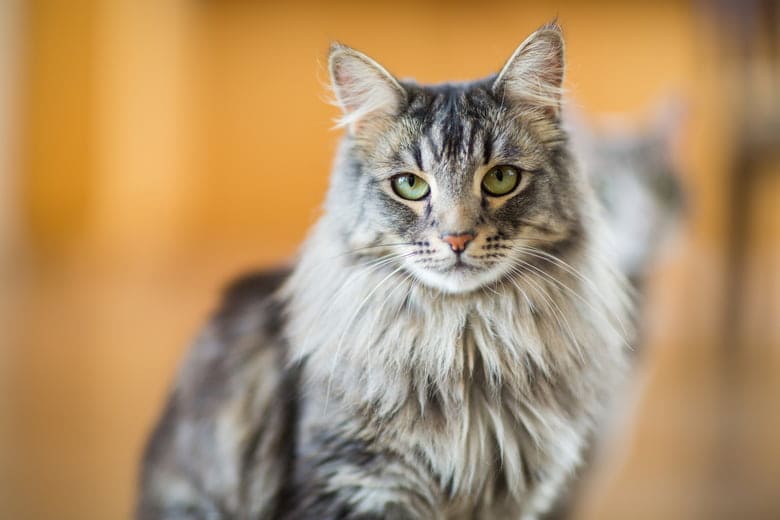
The Maine Coon, one of the oldest in North America, was first discovered in Maine, where it is the official state feline. According to the The International Cat Association (TICA), they are known and liked for their intelligence, friendliness and good-natured goofiness. (Fetch? Heck yeah!) They prefer to hang with their people versus being coddled by them.
Size: Large and in charge, indeed. Mature males are between 13-18 pounds on average, and female cats are generally between 9-13 pounds.
Care: Because these cats like attention, the weekly combing of their heavy, glossy fur is easy, TICA says. Hills Pet notes that their tendency to shed is “high,” and that this breed could become overweight if they don’t receive adequate exercise and a healthy diet.
2. Persian
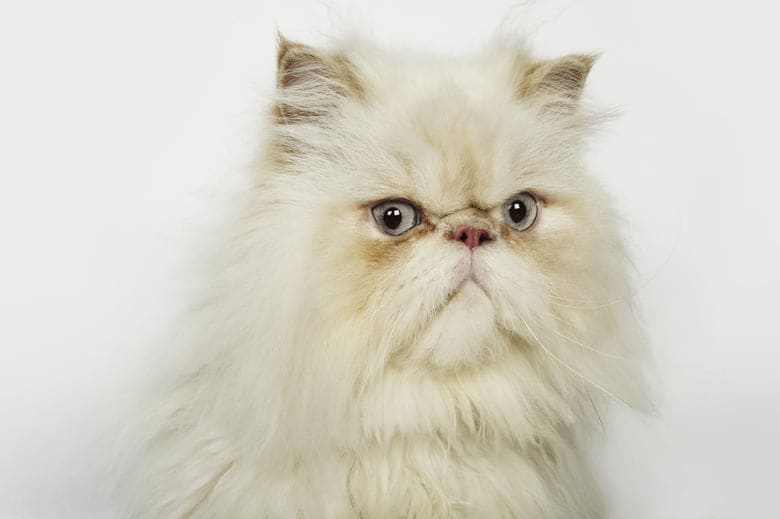
Originally hailing from Mesopotamia, now present-day Iran, these kitties won over a guy (OK, more accurately an Italian nobleman, perhaps the first documented “cat man”) who brought them to Europe in the 1600s, says Purina, adding that they later became a favorite of Queen Victoria. Perhaps their regal past is why they’re noted as independent and usually selective about the humans with whom they hang. They’re described as quiet types who thrive in relaxed environments.
Size: Medium to large. Males typically weigh 9-14 pounds and females 7-11 pounds.
Care: They shed a lot, Purina notes, but proper grooming can prevent scattered fur piles throughout your home. Monthly baths will also keep their skin healthy and clean. The Persian’s distinct smooshy face can predispose them to health problems, as well, such as respiratory difficulties and eye conditions.
3. Burmese
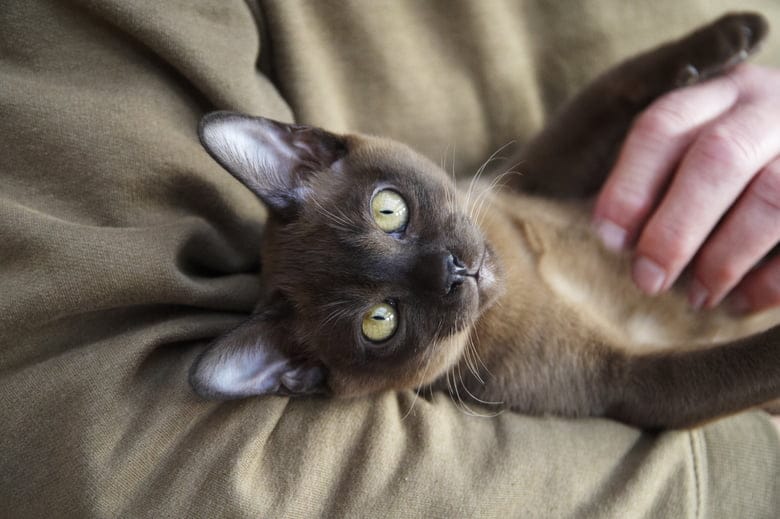
Burmese cats were bred from a singular cat named Wong Mau, who was first brought to the U.S. in 1930, according to Purina, and bred with a Siamese cat. They’re known for being curious, people-friendly, social and have a distinct soft voice, similar to that of a Siamese.
Size: These compact, medium-sized cats are surprisingly heavy, TICA says, but they tend to weigh in at 8 and 12 pounds, the size of a typical cat.
Care: Fans of the Burmese may consider adding a second to their brood since the breed adores companionship, according to TICA, and are best not left alone.
4. Egyptian Mau
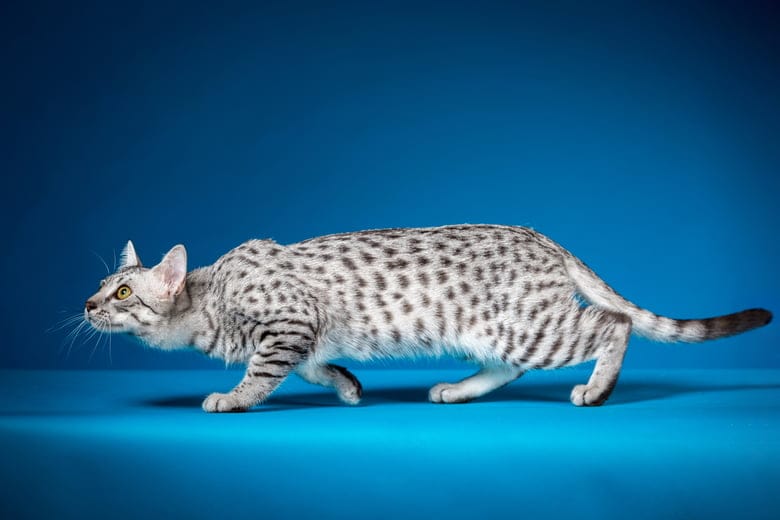
So beloved was this breed to the Egyptians, that they are evident in their ancient artwork — and it’s easy to see why. Their mascara-like markings, stunning green eyes, and elegance are all noted by TICA. The shy, loyal breed with keen senses tends to have a “naturally worried” look, which is perhaps a nod to their aversion to loud noises. Hills Pet says they enjoy a perch — like a bookshelf or fridge — from which to survey their domain, which most certainly belongs to them.
Size: Medium in size, males and females usually weight between 8 and 12 pounds.
Care: Trupanion says their short coats are low maintenance but this makes them sensitive to cold, so keeping them inside is key. Additionally, these “meticulously” clean kitties need a clean box — a filthy one will simply not fly.
5. Norwegian Forest Cat
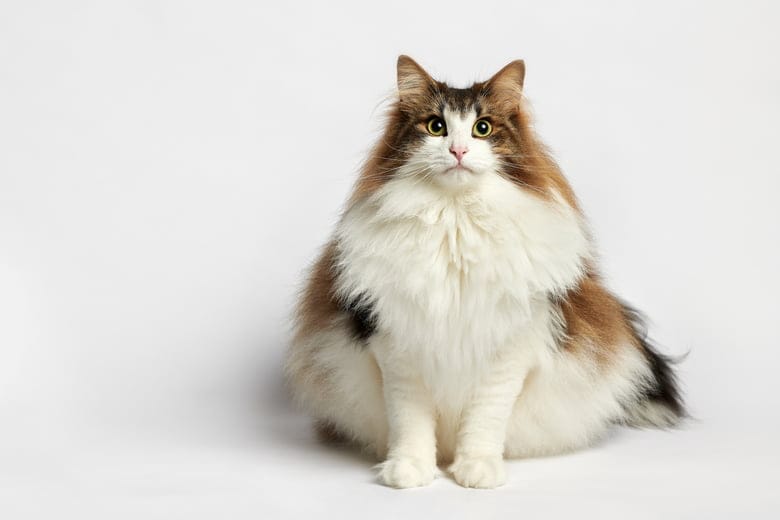
This semi-long-haired feline is native to Norway, according to the Cat Fancier’s Association, and everything it does, it does when it’s good and ready. (You got that?) They’re described as sensitive, social and friendly but on their own terms. Despite their outdoorsy name, they’re quite happy inside but do require a scratching post and cat tree — preferably with an outdoor view — to keep them stimulated.
Size: Large, with males weighing between 10 and 16 pounds, and females between 8 and 12 pounds.
Care: Purina notes that these big house cats shed heavily a couple of times per year, during which brushing is required. When they’re not in a shedding phase, brushing is needed one or two times a week. Bathing their waterproof coat isn’t recommended and is rarely needed.
6. American Bobtail
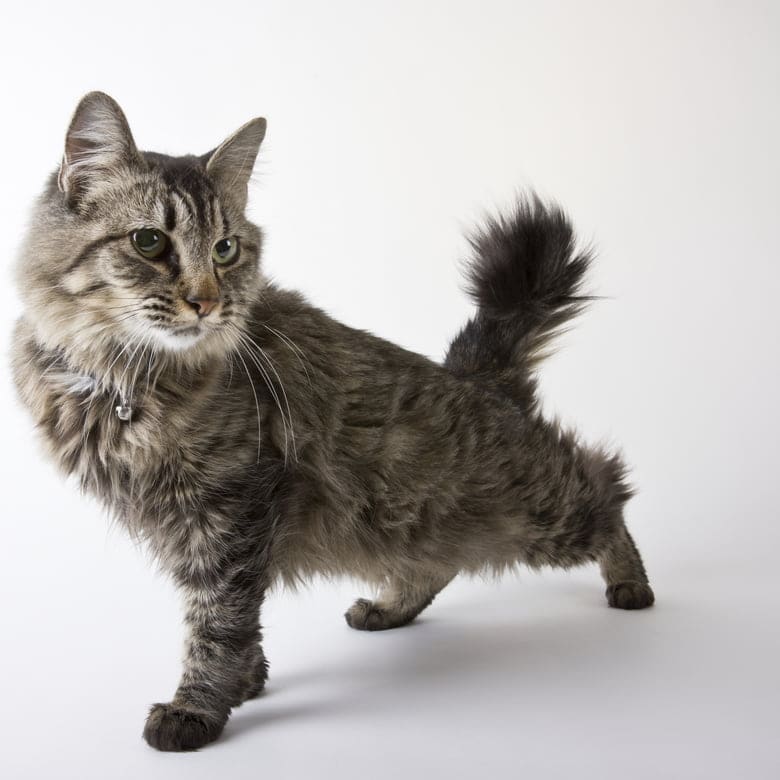
Class clown — there’s always one! Purina notes that these confident and friendly creatures stand out because of their clowning around. These short-tailed cats, who were bred in the U.S. starting in the 1960s, according to TICA, make a great family pet since they’re sociable with humans of all ages and even other friends of the four-legged variety. They’re all about fun — but aren’t in need of your undivided attention — and don’t tend to attach themselves to one person.
Size: Medium to large, males are 15-16 pounds, and females are 7-11 pounds.
Care: The CFA says an occasional bath and light brushing is needed to keep their coat — which comes in two lengths, shorthair coat and medium long-hair coat — in good shape.
7. Ragdoll
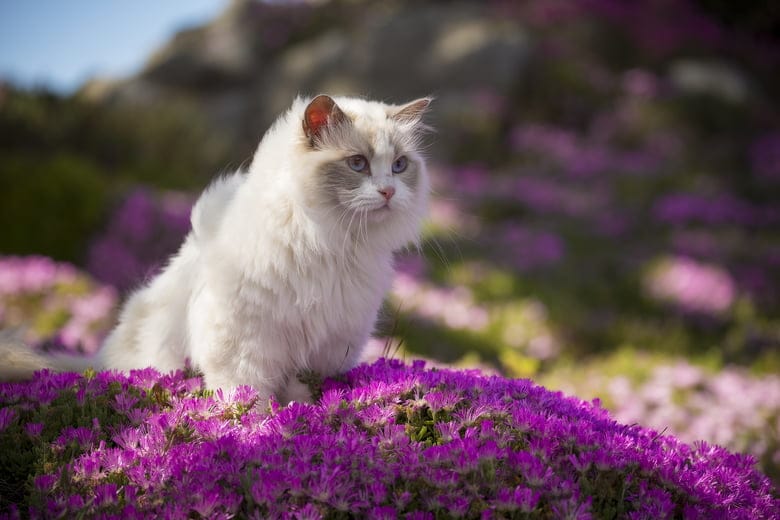
Cuddling may be in a ragdoll’s DNA. Developed as a breed in California in the 1960s, says TICA, they tend to collapse — just like a ragdoll — into the arms of willing snugglers. They’re described as relaxed, happy, quiet cats that are usually tolerant of other animals and children who want to carry them around. Like dogs, Ragdolls can be friendly, smart and have been taught by some owners to fetch.
Size: One of the largest breeds, males weigh 15-20 pounds and females 10-20 pounds.
Care: The Ragdoll’s coat requires grooming weekly with a steel comb to remove dead hair and tangles. Tangles will also accumulate under the armpits during shedding season, TICA says.
8. Siberian
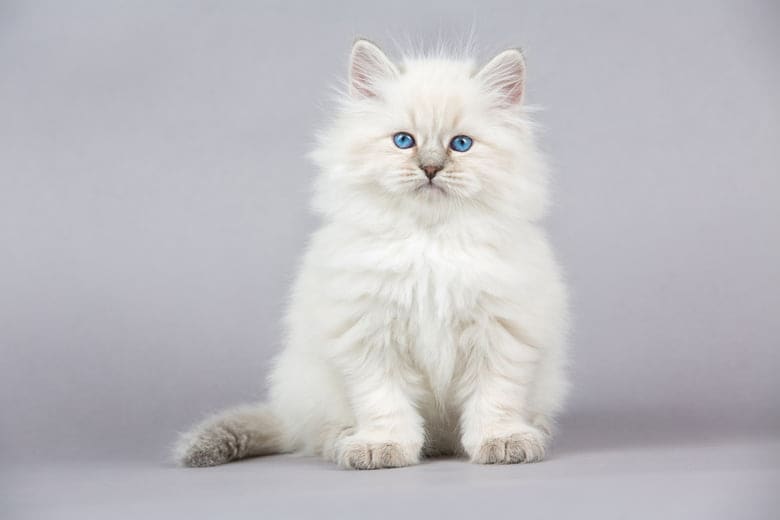
These cats have some serious staying power. Hailing from Siberia, this breed was first referenced all the way back in 1000 A.D., according to TICA. Powerful, intelligent and entertaining best describe the Siberian, which frequently takes problem-solving (like opening doors) into their own paws. Their semi-long coat is thick in the winter to withstand the elements and becomes shorter and lighter in the warmer months.
Size: Medium to large — anywhere from 8-20 pounds — with females usually smaller than males.
Care: They are people-oriented and generally want to be close to their humans, the CFA says. They also tend to be playful from kittenhood throughout adulthood. Purina recommends brushing them a few times a week.
9. Ragamuffin
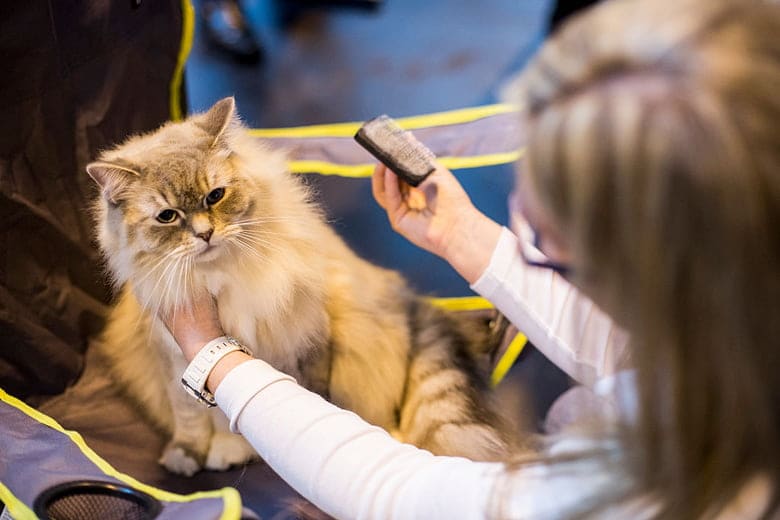
Tending to “go limp in your arms,” according to the CFA, these kitties, who are usually lap cats, are liked for their mellow dispositions. While their exact origin isn’t known, they were developed in the 1990s and have been recognized for their expressive eyes, plush coat and “teddy bear” qualities, says Purina.
Size: Large. Females weigh between 8 and 15 pounds, and males can weigh from 12-20 pounds.
Care: Their soft, no-fuss fur doesn’t typically mat or clump. Because they’re thought to be too trusting, the CFA recommends they stay indoors.
10. Chausie
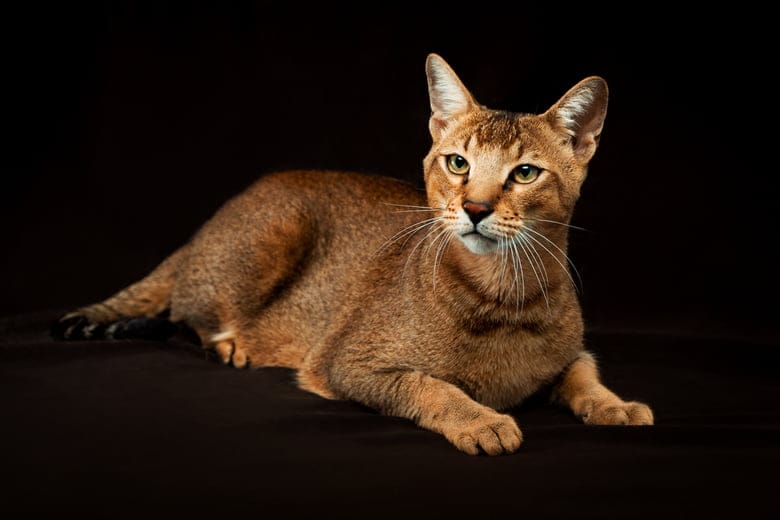
This cat’s name, derived from the Latin word for Jungle Cat, actually clues you in to the energy level of these felines. They’re described as affectionate and playful, but may not be ideal for families with young children. They tend to develop strong bonds with their humans and need lots of mental and physical stimulation that not all owners can provide.
Size: Large and long-bodied, Cats.com says they can weight up to 30 pounds.
Care: According to TICA, they’re always on the go and require stimulation and interaction with their owners. Leaving them alone for long periods is not advised.



